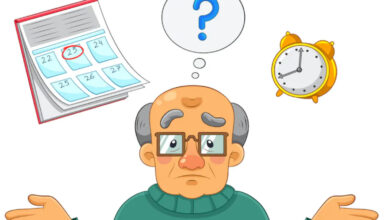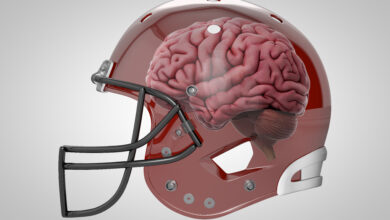THE CLOCK DRAWING TEST: Dementia or No Dementia?

TESTING FOR DEMENTIA:
Diagnosing dementia is a sensitive area to which medical science has given a lot of attention. And rightfully so since dementia has such a disruptive influence on family relationships and the lives of the elderly. Researchers worldwide have devised all sorts of “mental status “ tests to determine if a patient’s symptoms are really due to dementia. One of the more widely accepted procedures is the Clock Drawing Test.
In this test, the patient is asked to draw the face of an Analog Clock, the clock with a round face and sequential numbers 1 through 12. Nowadays, digital clocks, which just show the time in numbers, are seen just about everywhere, but analog clocks are still in common use as time-telling devices and decorative accent pieces. They are “omnipresent,” and everyone easily recognizes them. So it reasonably follows that people when asked should remember what one looks like and be able to draw one as well.
That’s the Clock Drawing Test (CDT). Variations of the test have been used for over 100 years. It is a sensitive test of “cognitive (perception and knowledge) decline,” and has become more popular in the past 40 years. I used it regularly in conjunction with the mini-mental status exam because it is very specific for diagnosing dementia. It is quick and easy to do. You merely hand the patient a piece of paper and a pen and ask them to draw the face of a clock. Their finished product is what determines their level of cognitive disruption.
What does the CDT actually test and what does it tell the doctor? A lot of things!
1. Hearing and vision: did the patient hear your instructions? Does he see what you
handed him?
2. Understanding: does the patient know what you’re asking him to do? (Insight)
3. Cooperation: does the patient comply with your request and complete the task?
4. Mental Visualization: can the patient see in his “mind’s eye” a clock face?
5. Manual Dexterity: does the patient have use of his hands to complete the task?
6. Memory: does he remember what a clock looks like at the beginning of the test and
during the drawing?
7. Organization: does the patient have the ability to plan and execute the task?
Everyone knows what a clock looks like so the task should be accomplished easily, and cognitively normal folks have no problem. However, failure to draw the clock, or a “mistake-ridden” drawing, is a clear indication of a “poorly working brain.” The CDT can vividly show the disarray of a patient’s cognitive ability as occurs in Alzheimer’s disease or in patients who had strokes that have affected the areas of the brain that accept intellectual information or express an intellectual conclusion. In other words, an abnormal CDT “signals the need for further assessment of a patient’s ability” to perform tasks and understand information presented to them.
Most people with dementia will forget some numbers, crowd them together, or space them incorrectly. They are unable to remember that 3, 6, 9, and 12 are the 15 minute segments of an hour and don’t place them in the proper quadrant. Severely demented folks have trouble even making a circle.
Another part of the CDT, and the most difficult part, is asking the patient to place the hands at a specific time on the clock face. I always used 4:30 but experts recommend 10 after 11 (11:10). People with dementia either place the hands completely wrong, make both hands the same length, or are unable to understand that 10 minutes after the hour is the “2.” This tests patient’s reasoning and cognition using a different method. Placing the hands tests the patient’s ability to understand information presented to them (insight) and their ability to do what is asked.
Scoring the test can be very subjective and is best done by someone who has seen and administered a lot of these tests. Things such as size and quality of the circle, placement and sequencing of the numbers, and placement and size of the hands are scoring factors. The presence of extra marks that bear no relation to the drawing and shape of the clock indicate patient confusion.
Any abnormality on the CDT leads the doctor to perform other tests of cognition and memory that further probe into the patient’s mental capacity. The CDT is a good place to start. It gives the doctor a test he can use as a comparison against future tests to determine improvement of worsening.
So, when you go to the doctor, if he asks you to draw the face of a clock, and you don’t have a clue why, it’s because your loved ones have expressed concern about you and have told the doctor they are worried about your mental state. If you fail the CDT, it means the doctor has detected signs of dementia, or some other neurologic disorder, and further testing will need to be done for confirmation. The CDT test is a good gauge of cognitive problems and should be used for anyone suspected of early onset dementia.
Reference: Frankenburg FR. The Clock Drawing Test: A useful screening and teaching tool. The Pharos 2019 Summer:49-53.




